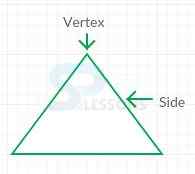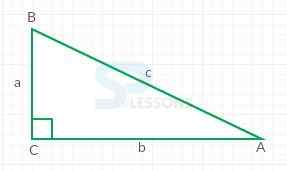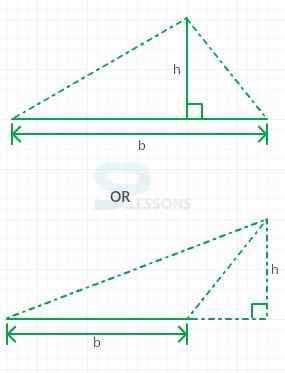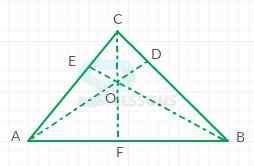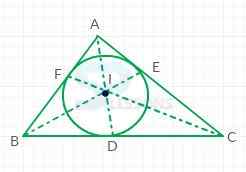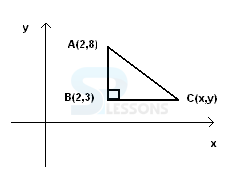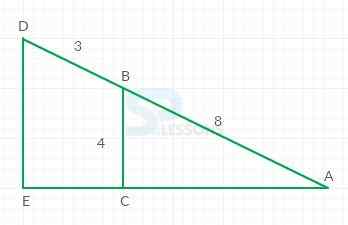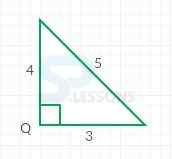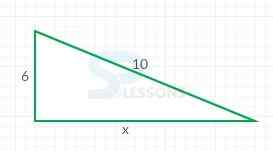 Introduction
Introduction
Quantitative Aptitude -BANKING|SSC|RAILWAYS|INSURANCE|RECRUITMENT EXAMS - EBOOKS
 Methods
Methods
Triangles can be categorized by the number of equal (or congruent) sides they have.
- A triangle with no equal sides is a scalene triangle,
- A triangle with two equal sides is an isosceles triangle, and
- A triangle with three equal sides is an equilateral triangle.
- All the three sides of equal length.
- Each angle in an equilateral triangle is equal to 60 degrees.
- A triangle having an obtuse angle is known as obtuse triangle.
- One of the angles of the triangle measures more than 90 degrees.
- A triangle having a right angle is known as right angle triangle.
- Side opposite to the right angle is known as hypotenuse.
- The two sides that form the right angle are called the legs.
- An angle, lying opposite the greatest side, is also the greatest angle and vice versa.
- Angles, lying opposite the equal sides, are also equal and vice versa.
Note:-
1. An orthocenter of an acute-angled triangle is placed inside of the triangle.
2. An orthocenter of an obtuse-angled triangle outside of the triangle.
3. An orthocenter of a right-angled triangle coincides with a vertex of the right angle.
Centroid:
Intersecting point of median is known as centroid as shown in the figure below. This point divides each median by ratio 2:1, considering from a vertex.
Median:
Median is a line segment, joining any vertex of triangle and a midpoint of the opposite side.
In-center:
Intersecting point of angle bisector is known as in-center.
Angle bisector:
It is a line segement from a vertex to a point of intersection with an opposite side.
Note:-
Angle of bisector divides an opposite side into two parts, proportional to the adjacent sides.
Circumcenter:
- Intersecting point of mid-perpendicular bisector of side is known as circumcenter.
- Mid-perpendicular is a perpendicular drawn from a middle point of a side.
Note:-
1. In an acute angled triangle circumcenter lies inside of the triangle.
2. In an obtuse angled triangle circumcenter lies outside of the triangle.
3. In a right angled triangle circumcenter lies in the middle of the hypotenuse.
4. An orthocenter, a centroid, an in-center and a circumcenter coincide only in an equilateral triangle.
Example 1:
The right triangle shown below has an area of 25. Find its hypotenuse.
Solution:
- Since the x coordinates of points A and B are equal, segment AB is parallel to the y axis. Since BC is perpendicular to AB then BC is parallel to the x axis and therefore y, the y coordinate of point C is equal to 3.
We now need to find the x coordinate x of point C using the area as follows.
Area = 25 = (1/2) d (A, B) * d (B, C)
d (A, B) = 5
d (B, C) = |x - 2|
We now substitute d(A,B) and d(B,C) in the area formula above to obtain.
25 = (1/2) (5) |x - 2|
We solve the above as follows
|x - 2| = 10
x = 12 and x = - 8
We select x = 12 since point C is to the left of point B and therefore its x coordinate is greater than 2.
We have the coordinates of point A and C and we can find the hypotenuse using the distance formula.
hypotenuse = d(A,C) = sqrt[[latex] (12 - 2)^{2}[/latex] + [latex](3 - 8)^{2}[/latex]]
= sqrt(125) = 5 sqrt(5)
- The area is given by
Area of triangle = (1/2) base * height
= (1/2)(20)(20) = [latex]200 cm^{2}[/latex]
 Samples
Samples
1. What is the area of isosceles right angled triangle if its legs are 5 and 24 units?
Solution:
A. The quantity on the left is greater.
B. The quantity on the right is greater.
C. Both are equal.
D. The relationship cannot be determined without further information.
Solution:
A. The quantity on the left is greater.
B. The quantity on the right is greater.
C. Both are equal.
D. The relationship cannot be determined without further information.
Solution:
- Given
Legs of a isosceles right angled triangle. So,
Let
Breadth be [latex]b[/latex] = 5 units.
Height be [latex]h[/latex] = 24 units.
Area of the triangle = [latex]\frac{1}{2}[/latex] x [latex]b[/latex] x [latex]h[/latex]
= [latex]\frac{1}{2}[/latex] x 5 x 24 = 60 units.
- Given that,
AB = BD
BC = CD
[latex]\angle[/latex]ACD = [latex]{80}^{\circ}[/latex]
Since AB = BD,
[latex]\angle[/latex]CBD = [latex]\angle[/latex]CDB.
There is [latex]{100}^{\circ}[/latex] left in the triangle.
So, each of these angles is [latex]{50}^{\circ}[/latex].
[latex]\angle[/latex]DBA is supplementary to [latex]\angle[/latex]DBC making it [latex]{130}^{\circ}[/latex].
Since BA = BD,
[latex]\angle[/latex]BAD = [latex]\angle[/latex]BDA.
There is [latex]{50}^{\circ}[/latex] left in the triangle. So, each of these angles is [latex]{25}^{\circ}[/latex].
- Given that,
DE[latex]\parallel[/latex] BC
So, [latex]\bigtriangleup[/latex]ADE ≅ [latex]\bigtriangleup[/latex]ABC.
Now, [latex]\frac{4}{DE}[/latex] = [latex]\frac{6}{9}[/latex]
DE = 6 inches.
| Quantity A | Quantity B |
| Area of [latex]\bigtriangleup[/latex]Q | 8 sq. m. |
- Given that
Q is a right angled triangle.
Area of the triangle = [latex]\frac{1}{2}[/latex] x [latex]b[/latex] x [latex]h[/latex]
Let, 3 and 4 be [latex]b[/latex] and [latex]h[/latex].
So, A = [latex]\frac{1}{2}[/latex] x 3 x 4
A = 6.
Therefore, area of [latex]\bigtriangleup[/latex]Q is 6 sq.m. which is less than 8 sq.m.
Hence, correct option is B.
| Quantity A | Quantity B |
| 9 | [latex]x[/latex] |
- By using Pythagorean theorem,
[latex]a^2[/latex] + [latex]b^2[/latex] = [latex]c^2[/latex]
⇒ [latex]6^2[/latex] + [latex]x^2[/latex] = [latex]10^2[/latex]
⇒ 36 + [latex]x^2[/latex] = 100
⇒ [latex]x^2[/latex] = 64
⇒ [latex]x[/latex] = 8
Therefore, 8 is less than 9.
Hence, option A is correct.






